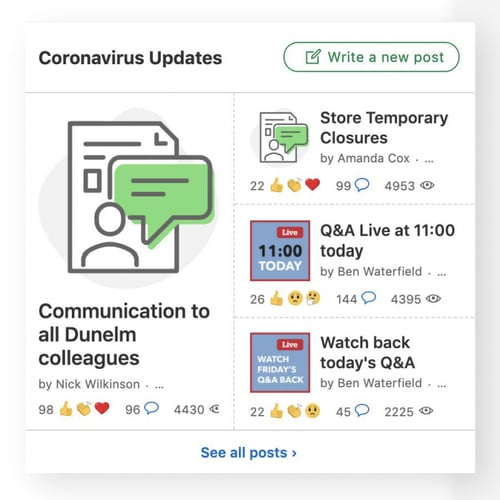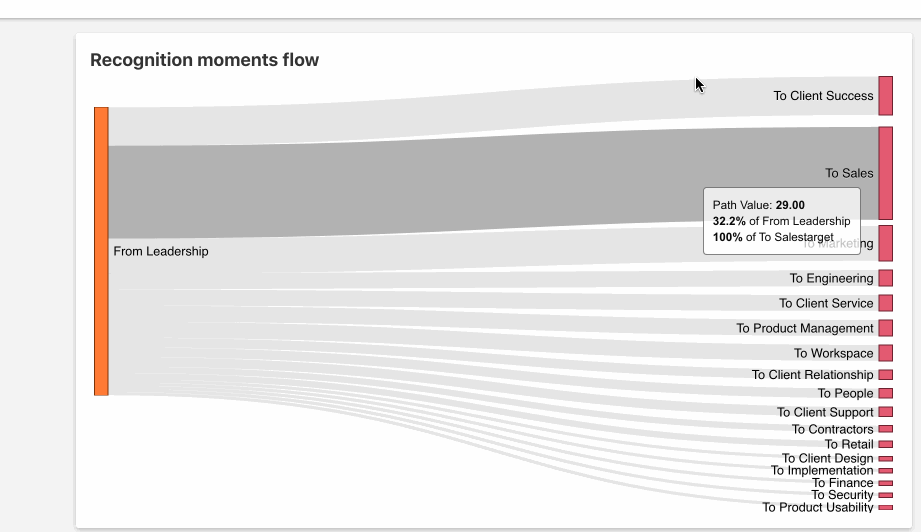7 min read
Here’s the truth: We are all tired. I’m tired, you’re tired and I am sure that your team is tired. That initial surge of adrenaline that came along with this unprecedented time has faded and now we’re all ready for a break. Unfortunately, with some businesses still in high-demand, and others that are having to pivot quickly to keep the doors open or grow, taking a month-long nap just isn’t an option.
The question then becomes: Where does that burst of strength come from?
How can you give yourself a surge of energy, and pass that feeling along to your people to ensure they stay motivated and productive as we approach six months of social distancing and working from home? And even though a lot of employees are working remotely, how do you connect, recognize and support your frontline workers who are also feeling the stress at home and at work?
It’s not easy, but it can be done. Here’s a look at how employees at all levels can contribute to a more productive, motivated environment:

How senior leaders can improve morale and productivity
Your senior leaders are the face of the organization. And while they once may have been hidden in a boardroom or just a picture on a plaque, during a pandemic there’s never been a more important time to show the human side of your leadership team and drive connections on a more personal level. Here are a couple ways to do that:
Learn more about how to prepare for a post-COVID-world and prevent employee burnout »
Talk about Mission and Values: Those companies that were able to pull together during the early days of the crisis often did so regarding their mission and values. Give your people a rallying cry. A reason to reinvigorate.
Our client, ABC Medical, spoke in a recent webinar about how employees' commitment to the medical needs of the customers they served brought their team together like never before. Personally, I lean on Reward Gateway's mission of Making the World a Better Place to Work as a reason to stay committed even when balancing the needs of stuck-at-home kids and my job.
Remind your employees of their why, and align them to your company’s mission, purpose and values to get them excited about showing up for work every day.
Connect directly with employees: Employees are looking for connection more than ever before. Remote work actually provides an opportunity for leaders to directly connect with employees in new ways. It may not have been possible to bring your whole company together for face-to-face meetings, but how about a live, web-based company update directly from the CEO?
Dunelm, a home-goods retailer, livened up their CEO updates by asking frontline employees for questions and topics they’d like to see addressed. They then changed the regular written update into a video update so employees can feel that they are hearing directly from leadership.

How managers can prevent employee burnout
Your managers are critically important to keep business moving during a challenging time like we’re in right now. Managers are the connectors in the business, they help Senior Leaders understand what is truly happening across teams and, if given the right autonomy, can pivot quickly to reduce employee disengagement across their teams. Here are a couple ways managers can help create the environment for more productivity:
Recognize across departments: Many of us have never said "Thank You" so much as we have in recent months. The last thing we want is tired teammates that start to take much-deserved recognition for granted. Whenever possible managers should elevate great work so it can be celebrated outside of their teams.

One of our clients in the healthcare industry (an industry that's been hit particularly hard due the pandemic), Lifetime Healthcare Companies, uses its employee recognition platform to share online recognition posts with other managers and VPs so they can pile on the praise and increase the attention that great work receives for all 6,000 employees.
In fact, our own CEO, Doug Butler, told me that if a team at Reward Gateway is under stress or achieving results, he wants to know so he can reach out personally and give them credit himself. This can be especially important coming from someone like the CEO, who many may feel is “up on a leadership pedestal” and not as connected to the frontline employees.
As a bonus, focusing on the success of others is a powerful way to reduce the stress and fatigue that managers are feeling.
Ask for feedback and be agile: What worked in April may not work in September. As leaders, we need to listen more than ever before to ensure we aren’t wasting time on efforts that no longer make a difference. Maybe your weekly virtual happy hour needs to be replaced with a more meaningful monthly staff meeting.
Maybe the approach of the school year is leaving parents feeling unprepared and they have ideas about how work can help them maintain balance into the future. Whether you are asking for ideas in your employee one-on-ones or using pulse surveys like many of our clients, feedback is key.

How employees can prevent burnout and fatigue while working from home
Your employees may be feeling utterly powerless right now – they’ve been on a rollercoaster of job security, disruptions to their everyday schedules, at-home stress and other stressors that are piling up day after day. But employees can use this time to inspire change in their organization so it creates the environment where they can do their best work. Here are a couple ways they can do that:
Speak up: You haven’t been in this position before and neither has your leadership. If you need support and have ideas for improvement, use your voice and advocate for those changes. One of the most frequent requests I hear managers make is for employees who spot a problem to bring them a solution. In this time of change, there may be opportunity to make changes that wouldn’t have worked before. For instance, you could implement a flexible schedule in a call center. We’ve seen clients make it work when it wouldn’t have before.
Here’s a quick tip to get your manager or leader on board: Start your request with a focus on how your idea will help, for example “In order for me to support customers more consistently…” That will make it easier for others to hear your idea!
Get involved: It may feel counterintuitive to tell a tired workforce to do MORE, but we have seen that shaking up your task list can make that list easier to tackle. Are you passionate about yoga? We have people who have set up a time each week when teammates can join in streaming a yoga video from our Wellbeing Center.
Many organizations are setting up clubs to keep people connected – a women’s group, a cooking club, etc. No clubs you are interested in? Set one up! While many of us have become accustomed to less connection in our day, our brains get a boost from interaction. Don’t rely on the same old meetings to keep you connected and engaged!

In this ever-evolving world, we don’t know what is coming next. All we know is that we have to do what we can to support our workforce and keep going. Acknowledging that your employees, your managers and yes, your leaders are just plain tired is the first step in building a stronger, more engaged business that’s ready for whatever the future brings us.
If you need help or more ideas on how to reinvigorate a burned out workforce, I’m more than happy to help you think outside the box. You can find me on LinkedIn, or send me an email. Remember, we’re all in this together. And when else fails, there are always cat YouTube videos to keep you afloat.

%20(1).jpeg) Alexandra Powell
Alexandra Powell




